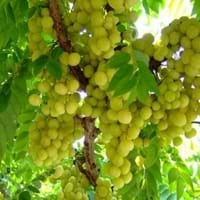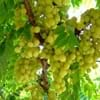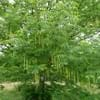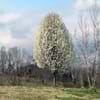Life Span
Perennial
Perennial
Type
Fruit, Tree
Bulb or Corm or Tuber
Origin
Not Available
Hybrid origin
Types
Not Available
boissieri , cupanii , hungaricum , kesselringii
Number of Varieties
Not Available
Habitat
Forests, gardens, Hill prairies, Homesteads, Rocky areas, Woodlands
Temperate Regions
USDA Hardiness Zone
Not Available
Not Available
AHS Heat Zone
Not Available
Not Available
Sunset Zone
Not Available
21,22
Habit
Bushy, Evergreen
Clump-Forming
Flower Color
Light Green, Lime Green
Purple, Violet
Flower Color Modifier
Not Available
Bicolor
Fruit Color
Green, Light Green
Not Available
Leaf Color in Spring
Yellow, Green, Gray Green
Green
Leaf Color in Summer
Light Green
Light Green
Leaf Color in Fall
Yellow, Green, Gray Green
Several shades of Green
Leaf Color in Winter
Yellow, Green, Gray Green
Light Green
Leaf Shape
Ovate
Long Linear
Plant Season
Spring, Summer, Fall, Winter
Spring, Fall
Sunlight
Full Sun, Partial Sun, Partial shade
Full Sun, Partial Sun
Type of Soil
Loam, Sand
Loam
The pH of Soil
Acidic, Neutral, Alkaline
Acidic, Neutral
Soil Drainage
Well drained
Well drained
Bloom Time
Early Summer, Summer, Late Summer, Early Fall
Late Summer, Early Fall
Tolerances
Pollution, Salt, Soil Compaction
Drought
Where to Plant?
Ground
Ground
How to Plant?
Seedlings, Stem Cutting, Stem Planting
Divison, From bulbs, Seedlings
Plant Maintenance
Low
Medium
Watering Requirements
Keep ground moist, Requires regular watering, Use Mulches to help prevent water loss during hot and windy weather
Keep ground moist
In Summer
Lots of watering
Lots of watering
In Spring
Moderate
Moderate
In Winter
Average Water
Average Water
Soil pH
Acidic, Neutral, Alkaline
Acidic, Neutral
Soil Type
Loam, Sand
Loam
Soil Drainage Capacity
Well drained
Well drained
Sun Exposure
Full Sun, Partial Sun, Partial shade
Full Sun, Partial Sun
Pruning
Cut or pinch the stems, Do not prune during shooting season, Remove deadheads
no pruning required
Fertilizers
High Potash Fertilizer
All-Purpose Liquid Fertilizer
Pests and Diseases
Bacterial Blight, Foliage-feeding caterpillars, Moth
Dry root rot, Pest Free
Plant Tolerance
Pollution, Salt and Soil Compaction
Drought
Flower Petal Number
Single
Single
Foliage Texture
Fine
Coarse
Foliage Sheen
Matte
Glossy
Attracts
Caterpillar
Whiteflies
Allergy
Skin irritation
Poisonous to grazing animals
Aesthetic Uses
Not Used For Aesthetic Purpose
along a porch, deck or patio, Borders, Mixed Border, small hedge
Beauty Benefits
Blood purifying, Glowing Skin, Good for skin and hair, Provides herbal hair care, Speed hair growth
No Beauty Benefits
Environmental Uses
Air purification, soil stabilisation
Air purification
Medicinal Uses
Atherosclerosis, Cancer, Diabetes, Diarrhea, High blood pressure, High cholestrol, Obesity, Vitamin C
anti rheumatic, cathartic
Part of Plant Used
Fruits
Root
Other Uses
Making Shampoo, Used for its medicinal properties, Used in herbal medicines
Showy Purposes
Used As Indoor Plant
No
No
Used As Outdoor Plant
Yes
Yes
Garden Design
Cottage garden
Container, Cutflower, Foundation, Lawns and Turf, Mixed Border
Botanical Name
Phyllanthus acidus
COLCHICUM 'Lilac Wonder'
Common Name
Tahitian gooseberry, country gooseberry, star gooseberry, starberry, grosella
Hybrid Autumn Crocus, Hybrid Meadow Saffron
In Hindi
ताहितियन आमला
meadow saffron
In German
Tahitian Stachelbeere
Herbstzeitlose
In French
Tahitian Gooseberry
Colchique d'automne
In Spanish
Tahitian grosella espinosa
Estado de conservación
In Greek
Tahitian Φραγκοστάφυλο
meadow saffron
In Portuguese
Tahitian Gooseberry
Colchicum autumnale
In Polish
Tahitian agrest
Colchicum autumnale
In Latin
Tahitian Gooseberry
autumnale
Phylum
Magnoliophyta
Tracheophyta
Class
Magnoliopsida
Magnoliopsida
Order
Malpighiales
Liliales
Family
Phyllanthaceae
Liliaceae
Genus
Phyllanthus
Colchicum
Clade
Angiosperms, Eudicots, Rosids
Angiosperms, Monocots
Tribe
Phyllantheae
Not Available
Subfamily
Not Available
Not Available
Number of Species
Not Available
Not Available
Season and Care of Tahitian Gooseberry and Meadow Saffron
Season and care of Tahitian Gooseberry and Meadow Saffron is important to know. While considering everything about Tahitian Gooseberry and Meadow Saffron Care, growing season is an essential factor. Tahitian Gooseberry season is Spring, Summer, Fall and Winter and Meadow Saffron season is Spring, Summer, Fall and Winter. The type of soil for Tahitian Gooseberry is Loam, Sand and for Meadow Saffron is Loam while the PH of soil for Tahitian Gooseberry is Acidic, Neutral, Alkaline and for Meadow Saffron is Acidic, Neutral.
Tahitian Gooseberry and Meadow Saffron Physical Information
Tahitian Gooseberry and Meadow Saffron physical information is very important for comparison. Tahitian Gooseberry height is 800.00 cm and width 400.00 cm whereas Meadow Saffron height is 12.70 cm and width 20.30 cm. The color specification of Tahitian Gooseberry and Meadow Saffron are as follows:
Tahitian Gooseberry flower color: Light Green, Lime Green
Tahitian Gooseberry leaf color: Yellow, Green and Gray Green
Meadow Saffron flower color: Purple and Violet
- Meadow Saffron leaf color: Green
Care of Tahitian Gooseberry and Meadow Saffron
Care of Tahitian Gooseberry and Meadow Saffron include pruning, fertilizers, watering etc. Tahitian Gooseberry pruning is done Cut or pinch the stems, Do not prune during shooting season and Remove deadheads and Meadow Saffron pruning is done no pruning required. In summer Tahitian Gooseberry needs Lots of watering and in winter, it needs Average Water. Whereas, in summer Meadow Saffron needs Lots of watering and in winter, it needs Average Water.





